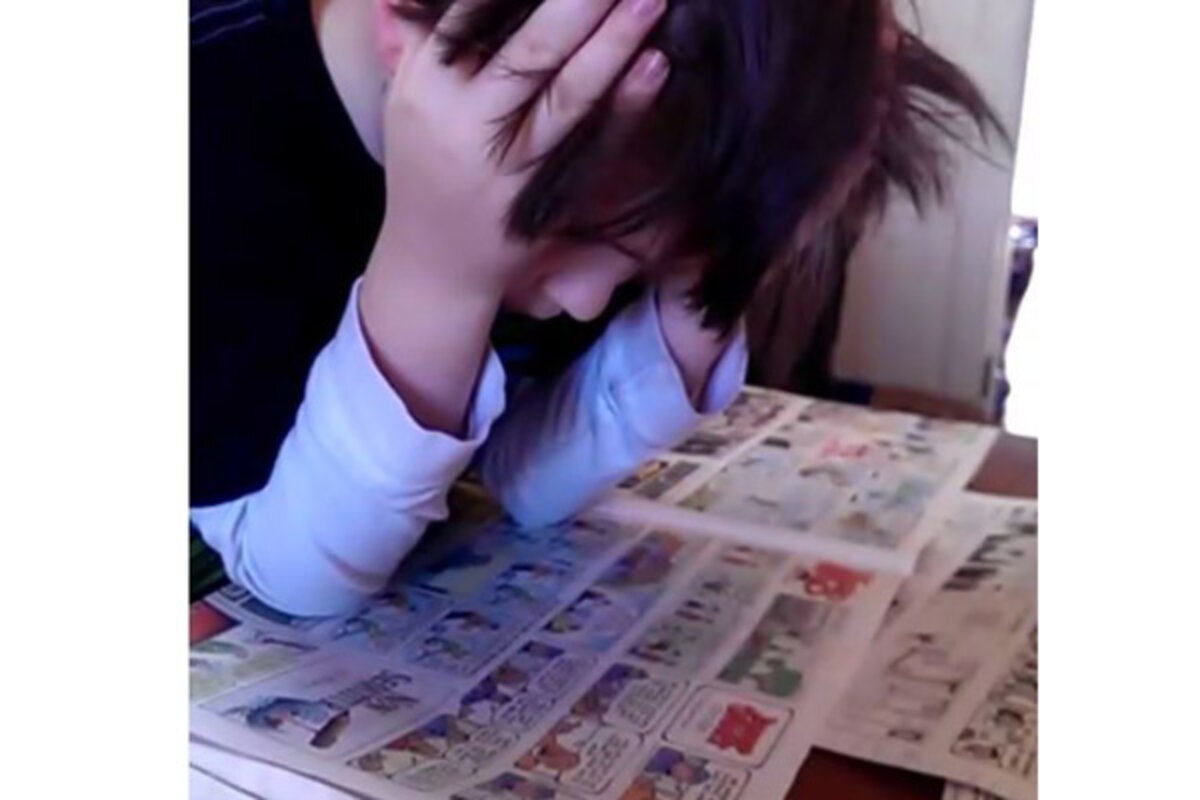National Cartoonists Day illustrates America's love for humor
Loading...
Monday is National Cartoonists Day. Families can celebrate by turning to the "funny pages" or sitting down to watch a cartoon together.
While parents often lament the amount of time kids spend watching cartoons and reading comic books or graphic novels, there is truth in jest. A reasonable amount of cartoons – both print and TV – should be a part of a child’s daily diet.
Each May 5, we honor all cartoonists, past and present, for the humor and insights they have brought into our lives. This day celebrates the first color cartoons ever published in America.
According to , it all began with the newspaper wars at the turn of the century, when color-printed comics were used to boost newspaper circulation.
The works of illustrator Richard Outcault's one-panel comic "Hogan's Alley" in 1889 gave birth to the first modern comic strip character, The Yellow Kid, in 1894, according to Duke.
Although Mr. Outcault’s cartoons appeared in Joseph Pulitzer's New York World first, competitor William Randolph Hearst hired the cartoonist right out from under Mr. Pulitzer and "The Yellow Kid" made its debut in Hearst's in 1895, according to Duke’s online library.
The precursors to modern comics were the satirical works of artists such as Rodolphe Töpffer, Wilhelm Busch, and Angelo Agostini (who is considered the first Brazilian comic artist).
Comic strips often punctuate family conversations with laughter and little “gotcha” moments when someone’s true nature is captured in ink.
As a kid, I lived for the next installation of the comic strip "Peanuts" by Charles Schulz and related to the trials of Charlie Brown, the mess of Pig-Pen, the overbearingness of Lucy, and the thumb-sucking wisdom of Linus.
My mom still cuts out comic strips and mails them to me and my four sons as a means of communication.
Once a week, an envelope arrives filled with all the “funnies” she spotted and related to her grandsons.
The teenager in the comic Zits is so much like my son Ian, 18, that whenever I want to communicate with him about the state of his room, hair, or driving skills, I cut out the appropriate strip.
Today, when I can’t find a favorite comic in the ever diminishing pages of the newspaper, the kids and I turn to online sources such as for our fix.
For our family, the “funnies” have been a way to start conversations about things nobody wants to talk about – be it cleaning your room or dating.
For all four of my sons, comics have been the gateway to enjoying reading in general.
My tactic has been to read the comics to them. They learned to read and we read together. Then, the boys read the funnies on their own, often aloud at the breakfast table.
Back in January, our local paper announced it was reducing its comics offering by one strip and asked readers to vote for the one that had to go.
My son, Quin, 10, took this very seriously.
He made lists of pros and cons for each strip and sent in his choice to the editor along with some choice words for how they “should leave out some of the bad news and make room for comics.”
I shot of Quin in his struggles at the time.
The newspaper ended up cutting one of Quin’s favorite strips. He will never forgive them.
Quin has a very special relationship with cartoons as his bridge to a world he often finds hard to grasp, both logically and emotionally.
The Cartoon Network show "Foster’s Home for Imaginary Friends" was one of the very first instances when Quin, at age 3, connected with the outside world in a meaningful way via the character Coco.
Coco is an imaginary friend who is part airplane, part bird, and part palm tree.
She says the word “coco” in place of every word in the English language and yet, via inflection and body language, is perfectly understood by those around her.
Quin didn’t speak more than two words until he was older than age 3. Like Coco, he used a few words in place of all others and repeated them “Coco-style” with various inflections.
One day, he sat with his brothers watching an episode called “My So-called Wife” in which Coco must pretend to be married to Mr. Herriman (a giant rabbit) and be sophisticated, speaking properly, at an event with a potential benefactor.
Mr. Herriman comes up with the plan of asking only questions that would result in the answer, “coco.”
Q: “What is your favorite drink?”
A: “Coco!”
Q: “What’s your favorite shade of brown?”
A: “Coco!”
Q: “Who’s your favorite gorilla who knows sign language?”
A: “Coco!”
Quin was in love. His new word became “coco.”
I ended up writing a thank you letter to the cartoon’s creator, Craig McCracken.
Mr. McCracken responded by sending Quin a sketch of Coco dressed in Quin’s favorite crazy hat and a bunch of Foster’s Home action figures.
We took the toys to the speech therapist and Quin began relating to all the Foster’s characters and using the cartoon toys in play where he tried doing all their voices and saying new things.
While there are plenty of cartoons out there that are not high caliber, parents can still find plenty of reasons to read and watch the good ones with kids today.





